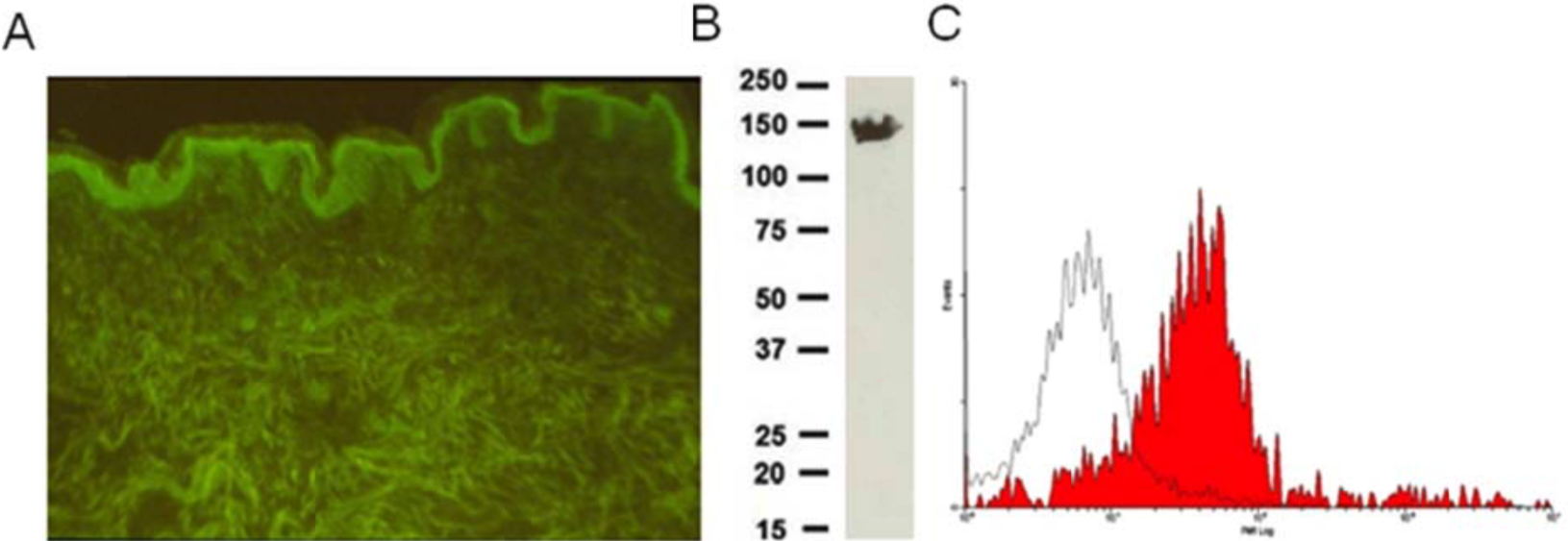
Anti Integrin Alpha-6 (VLA-6) mAb (Clone 537D5)
CAC-PRPG-ITG-M01
Product group Antibodies
Overview
- SupplierCosmo Bio USA
- Product NameAnti Integrin Alpha-6 (VLA-6) mAb (Clone 537D5)
- Delivery Days Customer16
- CertificationResearch Use Only
- Scientific DescriptionIntegrins are conserved, cation-dependent transmembrane receptors essential for cell survival and growth. They are comprised of alpha and beta subunits that are differentially involved in ligand binding and connection with the cytoskeleton. They link cells to the extracellular matrix (ECM) and to cell surface-bound adhesion molecules, such as to allow cells to properly organize within tissues in relation to underlying and/or surrounding matrices. Thus, in epithelia and vasculature integrins are critical in structuring the intricate junctional complexes with underlying basement membranes, whereas in connective tissues they allow cells to form stable attachments (i.e. focal adhesions) with their surrounding interstitial matrices and rapidly convert (bidirectionally) from stationary to motile phenotypes. Integrins not engaged in ligand binding are generally dispersed on the surface of cells but tend to form microclusters. Upon ligand engagement they reorganize to form larger clusters that permit the stabilization of cell-ECM or cell-cell interactions. Simultaneously, through phosphorylation of the cytoplasmic portion of the beta subunit, integrins associate with key cytoskeletal adapter proteins, such as vinculin, talin, paxillin, tensin and FAK to activate complex signal transduction pathways converging with those elicited by growth factor receptors and other receptors for soluble and membrane-bound signal molecules. This results in the activation of the cell cycle, cell differentiation programs and/or the acquisition of motile properties. Conversely, loss of integrin binding to the matrix causes a type of programmed cell death known as anoikis. There are more than 15 alpha subunits and 8 beta subunits, which pair with each other in different combinations to generate a repertoire of over 20 different integrin receptors. These may be selective, binding one or two ligands or promiscuous, binding multiple ligands. Similarly, the same ECM component may be recognized by one individual integrin receptor or multiple receptors. Integrin expression is frequently altered in pathological conditions and mutations in the INTG genes are associated with inheritable diseases. In cancer, integrins are fundamental in conferring a more aggressive behavior to malignant cells and are therefore considered attractive therapeutic targets. However, thus far, only one anti-integrin drug is registered for clinical application and its use is for the treatment of neurological rather neoplastic diseases. The alpha6 integrin subunit pairs with two distinct beta subunits, beta1 and beta4, and with the latter one it forms a unique integrin receptor that is essential for the assembly and maintenance of hemidesmosomes. There are a total 8 different alternatively-spliced alpha6 isoforms known which show a diverse tissue distribution, i.e. isoforms containing segment X1 are ubiquitously expressed, whereas isoforms containing segment X1X2 are expressed in heart, kidney, placenta, colon, duodenum, myoblasts and myotubes. Similarly, in some tissues, isoforms containing cytoplasmic segment A and isoforms containing segment B are detected while in others, only isoforms containing one cytoplasmic segment are found.
- UNSPSC12352203
